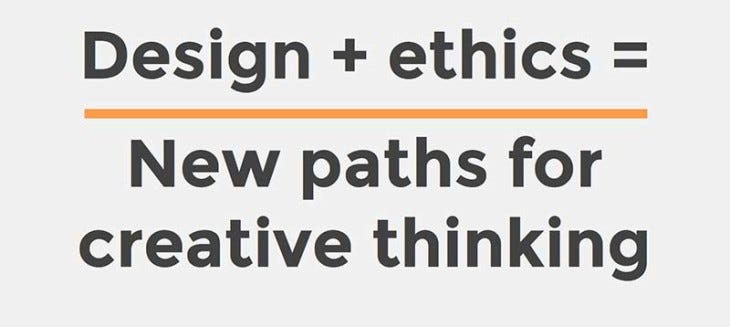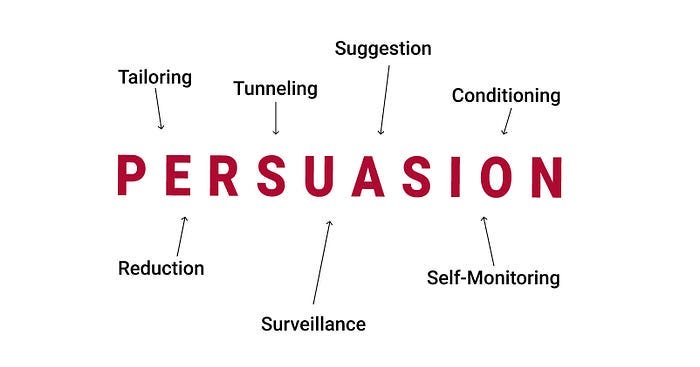Designing Ethical Products and Services
As UI/UX designers, we have a responsibility to create products and services that are not only user-friendly but also ethical. The design choices we make can have a significant impact on users, and it’s crucial that we consider the ethical implications of our designs.
In this article, we’ll explore the importance of design ethics in UI/UX design, principles to guide ethical design, and practical tips for implementing design ethics in your design process. We’ll also discuss dark patterns and how to redesign them into ethical features.
What is Design Ethics?
Design ethics refers to the principles and standards that guide ethical decision-making in design. It involves considering the impact of our design choices on users and society as a whole. Ethical design prioritizes user well-being, fairness, and transparency.
Second Order Thinking in Ethical Design
Designing ethical products and services means not only considering the immediate impact on users, but also the impact on society, the environment, and future generations. This is where second-order thinking comes in. Second-order thinking is the ability to think beyond the obvious and consider the long-term and unintended consequences of our decisions.

For example, let’s consider the design of a plastic water bottle. On the surface, it may seem like a harmless and convenient product. However, when we apply second-order thinking, we start to see the potential long-term and unintended consequences of using plastic water bottles. Plastic water bottles contribute to the plastic waste problem, which is harmful to the environment and wildlife. The production of plastic water bottles also requires a significant amount of resources and energy, which has a negative impact on the environment.
To design an ethical product, we would need to consider the environmental impact of using plastic water bottles and find alternative solutions that are sustainable and eco-friendly. This could mean designing a reusable water bottle made from recycled materials or creating a water filtration system that eliminates the need for disposable water bottles altogether.
Principles of Design Ethics

Incorporating the principles of design ethics into our design process can help us create products and services that not only meet the needs of our users but also align with our values as designers. The following principles guide design ethics:
1. Respect for Human Dignity — Designers should respect human dignity by creating products and services that do not exploit or dehumanize people. This means designing products that do not discriminate against people based on their gender, race, ethnicity, age, religion, or any other personal characteristic.
For example, when designing a fitness app, we should ensure that the app’s content and language do not promote harmful stereotypes or body shaming. We should also consider how the app’s design may be inclusive of people of different abilities and fitness levels.
2. Inclusivity — Designers should create products and services that are accessible and inclusive to all users, regardless of their abilities or disabilities. This means considering things like color contrast, font size, and alternative text for images. Inclusive design is not only ethical, but it also ensures that all users can use the products and services we design.
For example, when designing a website, we should ensure that it is accessible to people with visual impairments by using proper contrast ratios and providing alternative text for images. We should also consider how the website may be navigated by people with different abilities, such as those who use assistive technologies like screen readers.
3. Sustainability — Designers should design products and services that are sustainable and have a minimal impact on the environment. This means designing products that are made from eco-friendly materials, can be easily recycled, and have a longer lifespan. Sustainable design not only benefits the environment but also saves costs in the long run.
For example, when designing a product packaging, we should consider using biodegradable or recyclable materials instead of non-biodegradable plastics. We should also design products that are durable and can withstand multiple uses, reducing the need for frequent replacements.
4. Privacy and Security — Designers should design products and services that protect user privacy and ensure security. This means designing products that are transparent about data collection and usage, have secure data storage, and protect user information from unauthorized access.
For example, when designing a social media platform, we should ensure that user data is protected from data breaches and unauthorized access. We should also provide users with clear and transparent information about how their data is being used and give them control over their privacy settings.
5. Transparency and Honesty — Designers should be transparent and honest about the products and services they design. This means designing products that are transparent about their features, pricing, and limitations. Honest and transparent design builds trust and credibility with users.
For example, when designing a mobile app, we should provide users with clear information about in-app purchases and subscription fees. We should also be upfront about any limitations or restrictions on app usage.
Implementing Design Ethics in Your Design Process

Now that we understand the importance of design ethics and the principles that guide it, let’s talk about how to implement it in your design process. Here are some practical tips:
- Build it into the Foundation of Your UX: Design ethics should be built into the foundation of your UX process. This means that from your first UX step, you should be thinking about things like risk assessment, who could possibly be harmed or helped by your design work, and how to incorporate ethical considerations into your research, foundation, and prototype testing.
- Use Inclusive Design: Inclusive design involves designing products and services that are accessible to all users, regardless of their abilities or disabilities. This means considering things like color contrast, font size, and alternative text for images. Inclusive design is not only ethical, but it also ensures that all users can use the products and services we design.
- Conduct User Research: User research is a crucial step in designing ethical products and services. It helps us understand the needs and preferences of our users, their limitations, and their feedback. User research helps us identify potential ethical issues and address them before launching our products and services.
- Test Your Design Ethically: Testing is an essential step in any design process, and testing ethically is just as important. We should test our products and services on a diverse group of users to ensure that they are accessible to all and do not discriminate against any specific group of people.
- Incorporate Feedback and Iterate: We should always be open to feedback from our users and willing to iterate on our designs to improve them. Incorporating feedback and iterating on our designs based on user feedback ensures that we are creating products and services that are user-centered and ethical.
Redesigning Dark Patterns into Ethical Features

Dark patterns are design choices that manipulate or deceive users into taking actions they may not have intended to take. Examples of dark patterns include pop-ups that are difficult to dismiss, misleading pricing, and hidden costs.
As designers, we should strive to avoid using dark patterns in our designs and instead redesign them into ethical features. For example, instead of using a pop-up that is difficult to dismiss, we could use a clear and prominent button that allows users to opt-in or opt-out of a feature. Instead of misleading pricing, we could provide clear and transparent pricing information.
Redesigning dark patterns into ethical features not only promotes user well-being but also builds trust and credibility with our users.
Conclusion
In conclusion, ethical design is an essential part of UI/UX design. It involves considering the impact of our design choices on users and society as a whole. By prioritizing user well-being, fairness, and transparency, we can create products and services that are not only user-friendly but also ethical.
Incorporating ethical design principles into your design process can seem daunting, but by using second-order thinking, building it into the foundation of your UX, using inclusive design, conducting user research, testing ethically, and incorporating feedback and iteration, you can create ethical designs that promote user well-being and build trust with your users.
Remember, as UI/UX designers, we have the power to create products and services that make a positive impact on society. Let’s use that power responsibly and design with ethics in mind.
